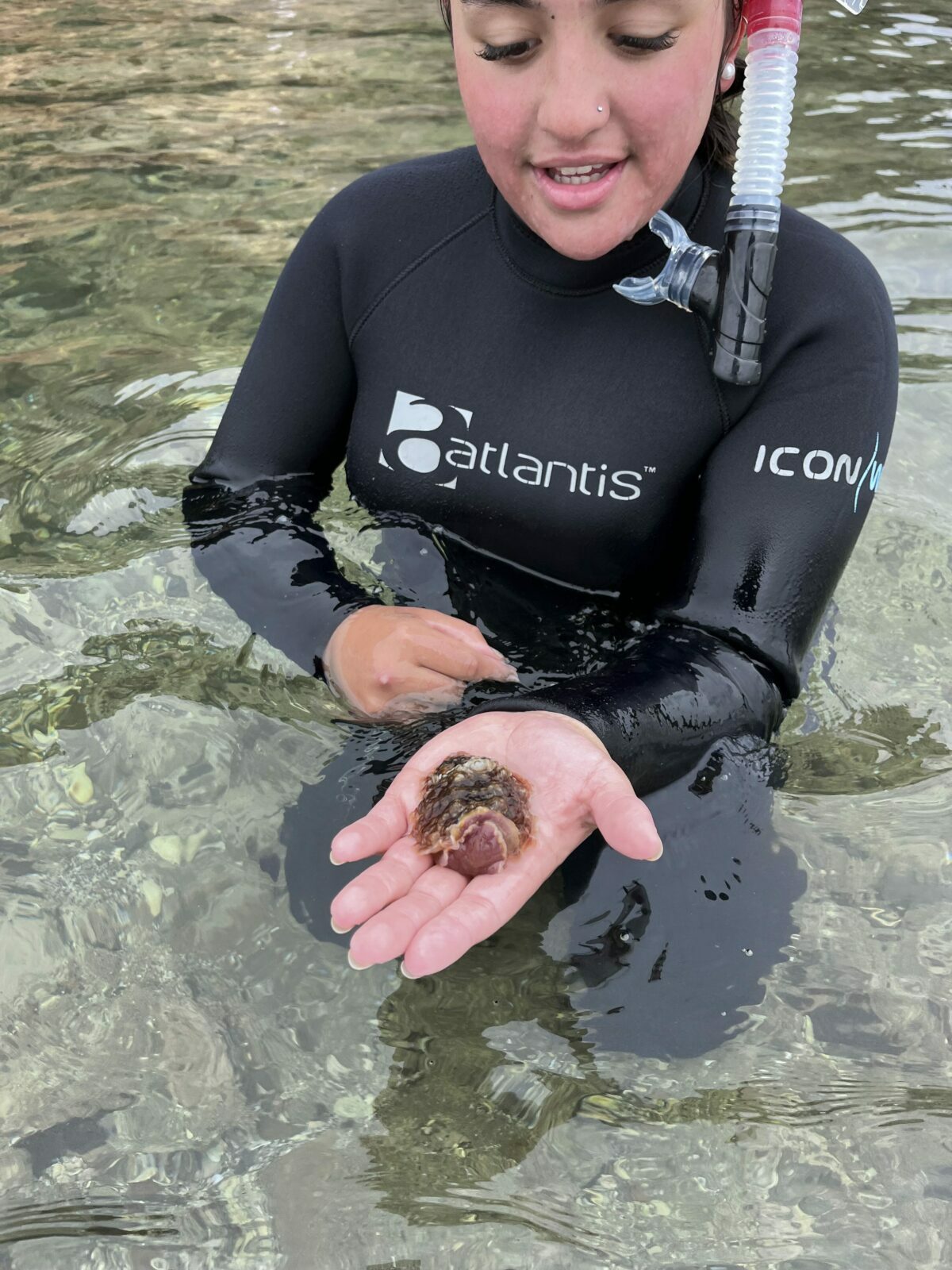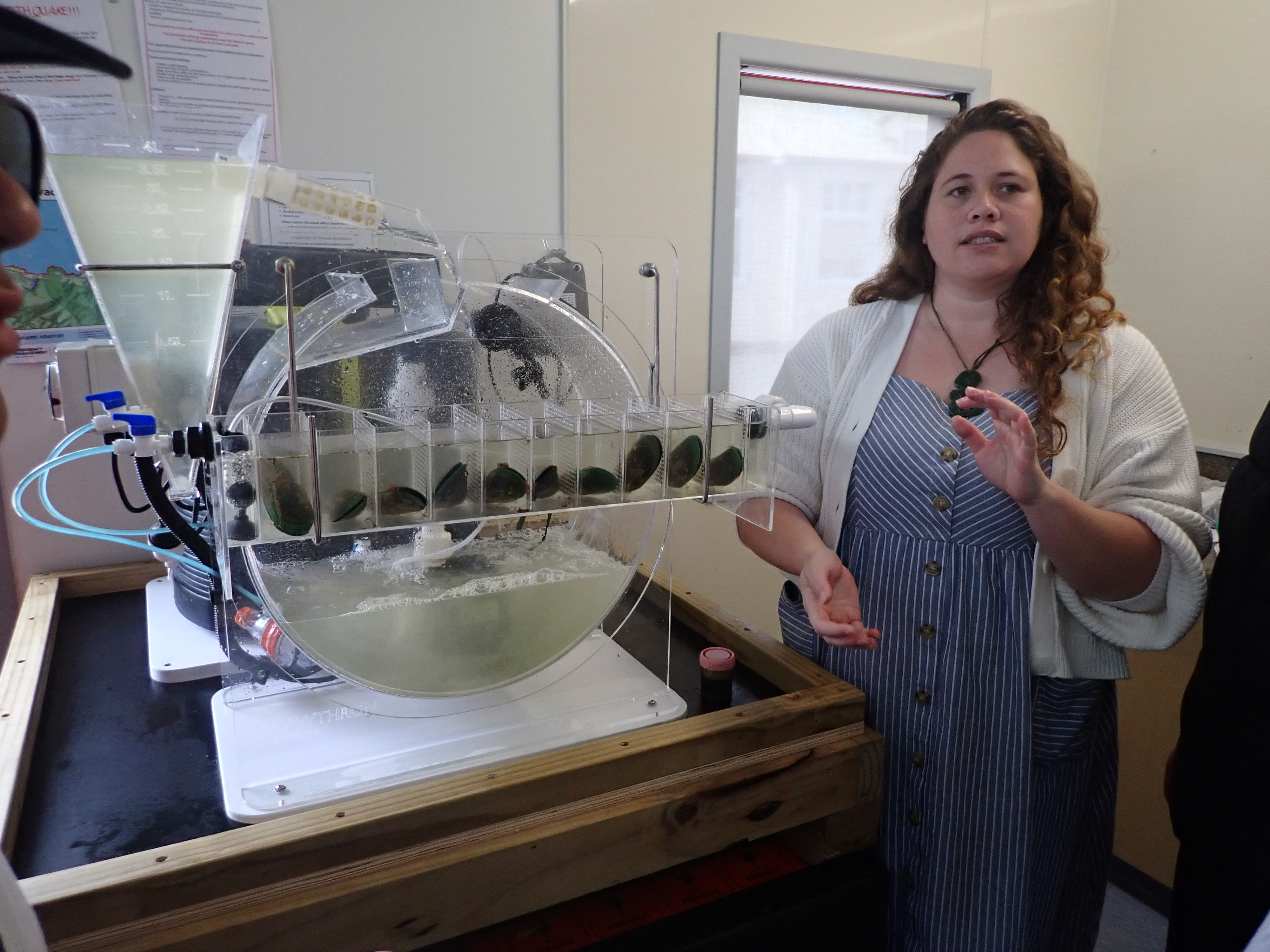Cawthron launches Ahumoana Whakahihiko/Inspiring Aquaculture programme at Ōpōtiki College
17 January 2024
Cawthron Institute’s Ngā Punga o te Moana open ocean aquaculture research programme delivered its first Ahumoana Whakahihiko (Inspiring Aquaculture) programme at Ōpōtiki College last December.
During the first of its kind offering, held during the School’s Wananga (Activities) week, a group of Year 10 students were exposed to the aquaculture industry’s key skills and knowledge including, shellfish analysis, husbandry, processing and food preparation alongside diving, boat navigation and marine pollution mitigation.
Ahumoana Whakahihiko is part of Cawthron’s six-year MBIE-funded Nga Pūnga o te Moana Open Ocean Aquaculture research and development programme. The programme aims to advance the core technologies and systems for growing oysters, scallops, and seaweed in New Zealand’s exposed (offshore) waters. Within the program, Cawthron is working with the Whakatōhea Māori Trust Board to assist with the advancement of their aquaculture strategy.
Cawthron Institute social scientist Dr Craig Prichard said developing the skills and interest of local rangatahi and placing a strong focus on mātauranga Māori is a shared goal of both partners.
“We’re delighted to be work with Whakatōhea, Ōpōtiki College and our local partners to get young people passionate about aquaculture, as it’s a very important part of the community here.”
This includes using some cool Cawthron technology to help the students learn, like a specially designed recirculating shellfish experimental station built by Cawthron engineers that students studying NCEA biology and statistics will use to inform their studies alongside real data collected through the Ngā Punga o te Moana programme.
Prichard said delivering the Programme has been a community effort.
“In addition to Cawthron staff and college teachers, the Ahumoana Whakahihiko offering drew on a wide range of knowledge and skills from local businesses and organisations.
“Local dive master Phil van Dusschoten from Whakatane based Diveworks Charters introduced students to diving and supervised the underwater ecology snorkeling trip to Ōpape Beach.
“Ōpōtiki Coastguard, Bay of Plenty Harbour Master staff and Ōpōtiki waka ama club, Kura ki tai Waka Ama, were also on board to cover boating safety, navigation, and boating skills during a day at the Ōpōtiki wharf.
On the final day the students visited the Open Ocean Whakatōhea Mussel’s Factory and the Tio Ohiwa oyster farm at Ohiwa Harbour.
Prichard says the success of the first Programme has provided proof of concept and the team are excited to deliver it again this year with larger groups in all four school terms.
“The first term’s Programme will be specially designed for the College’s Maurua, Māori immersion group, which we are very excited about because we think it will be the first aquaculture programme delivered in Te Reo Māori in Aotearoa New Zealand.”
For more information, visit openocean.cawthron.org.nz.


